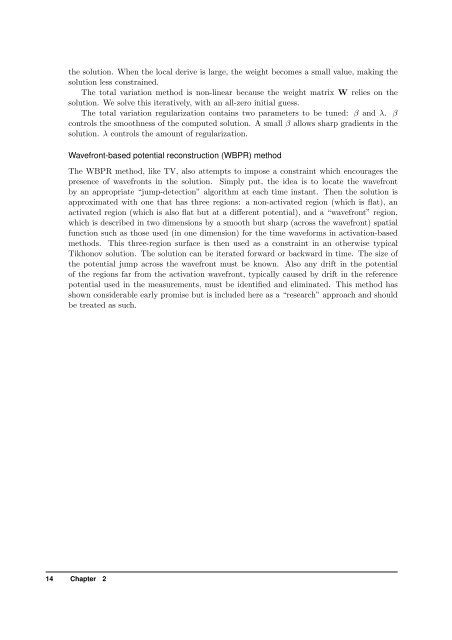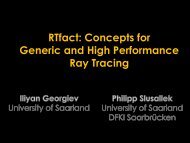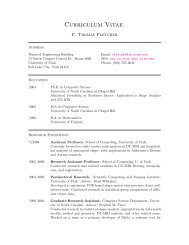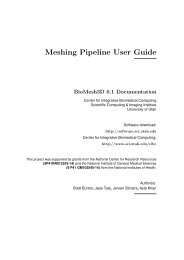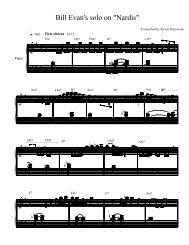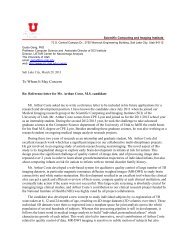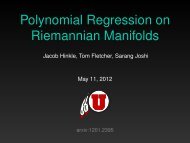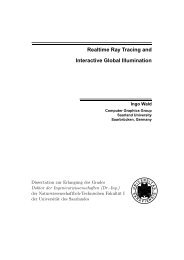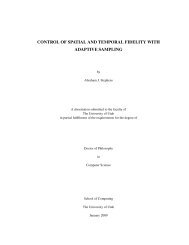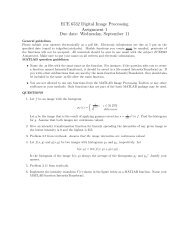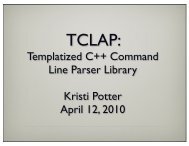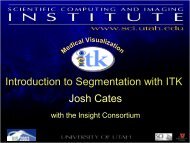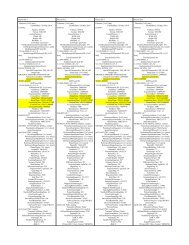SCIRun Forward/Inverse ECG Toolkit - Scientific Computing and ...
SCIRun Forward/Inverse ECG Toolkit - Scientific Computing and ...
SCIRun Forward/Inverse ECG Toolkit - Scientific Computing and ...
Create successful ePaper yourself
Turn your PDF publications into a flip-book with our unique Google optimized e-Paper software.
the solution. When the local derive is large, the weight becomes a small value, making the<br />
solution less constrained.<br />
The total variation method is non-linear because the weight matrix W relies on the<br />
solution. We solve this iteratively, with an all-zero initial guess.<br />
The total variation regularization contains two parameters to be tuned: β <strong>and</strong> λ. β<br />
controls the smoothness of the computed solution. A small β allows sharp gradients in the<br />
solution. λ controls the amount of regularization.<br />
Wavefront-based potential reconstruction (WBPR) method<br />
The WBPR method, like TV, also attempts to impose a constraint which encourages the<br />
presence of wavefronts in the solution. Simply put, the idea is to locate the wavefront<br />
by an appropriate “jump-detection” algorithm at each time instant. Then the solution is<br />
approximated with one that has three regions: a non-activated region (which is flat), an<br />
activated region (which is also flat but at a different potential), <strong>and</strong> a “wavefront” region,<br />
which is described in two dimensions by a smooth but sharp (across the wavefront) spatial<br />
function such as those used (in one dimension) for the time waveforms in activation-based<br />
methods. This three-region surface is then used as a constraint in an otherwise typical<br />
Tikhonov solution. The solution can be iterated forward or backward in time. The size of<br />
the potential jump across the wavefront must be known. Also any drift in the potential<br />
of the regions far from the activation wavefront, typically caused by drift in the reference<br />
potential used in the measurements, must be identified <strong>and</strong> eliminated. This method has<br />
shown considerable early promise but is included here as a “research” approach <strong>and</strong> should<br />
be treated as such.<br />
14 Chapter 2


